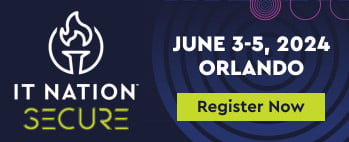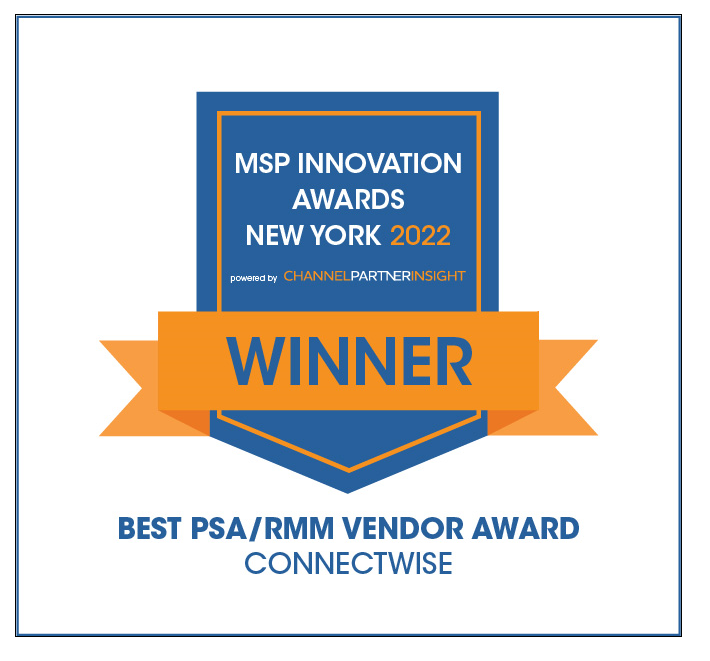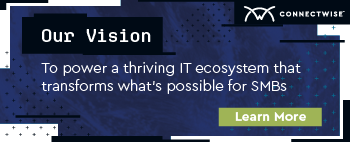Hyperautomation: The key to boosting MSP profitability
Hyperautomation is the next big wave of innovation for managed service providers (MSPs) to boost profitability and stay competitive. In this blog, we’ll discuss what hyperautomation is, how it can transform your MSP business, common pitfalls to avoid, and key recommendations for a successful implementation.
What is hyperautomation?
Hyperautomation refers to the integration of various technologies, such as generative artificial intelligence (AI), machine learning, and robotic process automation (RPA), to automate business processes. The term was coined by Gartner, and it refers to the spectrum of tools that exist beyond just AI that can drive automation.
At its core, hyperautomation is about using technology to digitize and automate repetitive, manual processes to boost efficiency. For MSPs, the biggest opportunities lie in automating service delivery processes that are currently handled manually by Level 1 and Level 2 technicians. This includes tasks such as resolving common service desk tickets, onboarding new clients, migrating data, updating documentation, and more.
When done right, hyperautomation allows MSPs to reduce payroll costs, deliver services more efficiently, improve the consistency of operations, and reallocate staff to focus on higher-value work.
The impact of hyperautomation on MSP profitability
To demonstrate the profitability gains possible with hyperautomation, we’ve modeled out scenarios comparing a typical 7.5M revenue MSP before and after implementing hyperautomation initiatives. You can explore the different phases below:
Phase 1 | 18-24 months
In Phase 1, we saw a:
- 20% reduction in managed service payroll costs by automating L1/L2 technician tasks
- 10% reduction in project service costs by automating project management workflows
- 5% reduction in SG&A costs by automating back-office processes
This resulted in:
- EBITDA margins improving from 18% to 23%
- Net income increasing from $1.3M to $1.7M
Phase 2 | Next 18-24 months
In Phase 2, we saw an additional:
- 10% reduction in managed service payroll costs
- 10% reduction in project service costs
- 5% reduction in SG&A costs
We also saw a:
- 4% increase in managed service pricing
- 12% jump in organic business growth
This resulted in:
- EBITDA margins improving to 28%
- Net income increasing to $2.4M, up over 50% from baseline
The analysis shows that when executed correctly, hyperautomation can drive EBITDA margins for MSPs from the typical 18% into the 25-30% range relatively quickly.
This matches what we’re seeing in the market—MSPs embracing automation are rapidly pulling away from the pack in profitability.
Avoiding common pitfalls
However, there are risks of leaving profitability gains on the table if hyperautomation is not implemented thoughtfully. Some of the most common pitfalls include:
- Price erosion: Some MSPs may be tempted to pass on cost savings to customers in the form of lower pricing, but this diminishes the profitability upside. It’s important that MSPs focus on maintaining current pricing.
- Undervaluing projects: MSPs may deliver projects more efficiently but fail to adjust project pricing margins accordingly. This causes profit leakage.
- Overestimating growth: Lower prices don’t necessarily drive proportionate increases in customers. MSPs assuming lower prices will spur dramatic growth will likely be disappointed.
To illustrate these pitfalls, we modeled out an example where the same MSP from the previous example chooses to:
- Cut managed service pricing by 30%
- Fail to adjust project pricing margins
- Assume lower prices will drive 24% customer growth
This would result in a:
- Drop in profitability to just 12% EBITDA margins
- Decline in net income to $928K, down over 30% from the baseline
This exemplifies how hyperautomation benefits can be squandered by not adjusting pricing models thoughtfully.
Key recommendations for MSPs
Based on these insights, we recommend MSPs take the following steps to successfully embrace hyperautomation:
- Appoint a hyperautomation lead
Create a new role focused exclusively on mapping out and implementing automation initiatives across your systems and processes. Consider repurposing an existing mid-level resource rather than hiring net new.
- Take a broad view of automation opportunities
Look beyond just the service desk. Pursue automation across service delivery, project teams, sales, finance, HR, and anywhere repetitive manual work takes place.
- Maintain pricing discipline
Resist the urge to pass savings on to customers in the form of lower pricing. Ramp pricing gradually upwards to account for inflation and new capabilities.
- Adjust project pricing models
Increase gross margin targets on project quotes to account for efficiency gains. Don’t leave money on the table.
- Partner with automation-focused vendors
Align with vendors who already have strong automation capabilities versus roadmaps. Accelerate your progress.
- Eventually productize for customers
Once internal expertise is strong, productize services to help customers implement hyperautomation themselves.
The bottom line
Hyperautomation presents a tremendous opportunity for MSPs to drive profitability gains of 30-50% or greater over the next two to four years. However, it requires a strategic approach focused on maintaining price discipline, adjusting pricing models, and partnering with the right vendors.
MSPs that execute flawlessly on hyperautomation over the next 24 months will pull away from the pack, and those who lag will feel intensifying margin pressure. The time to start is now.
We’re eager to speak with any MSPs looking for guidance on how to get started down the path to hyperautomation. Please don’t hesitate to reach out!


